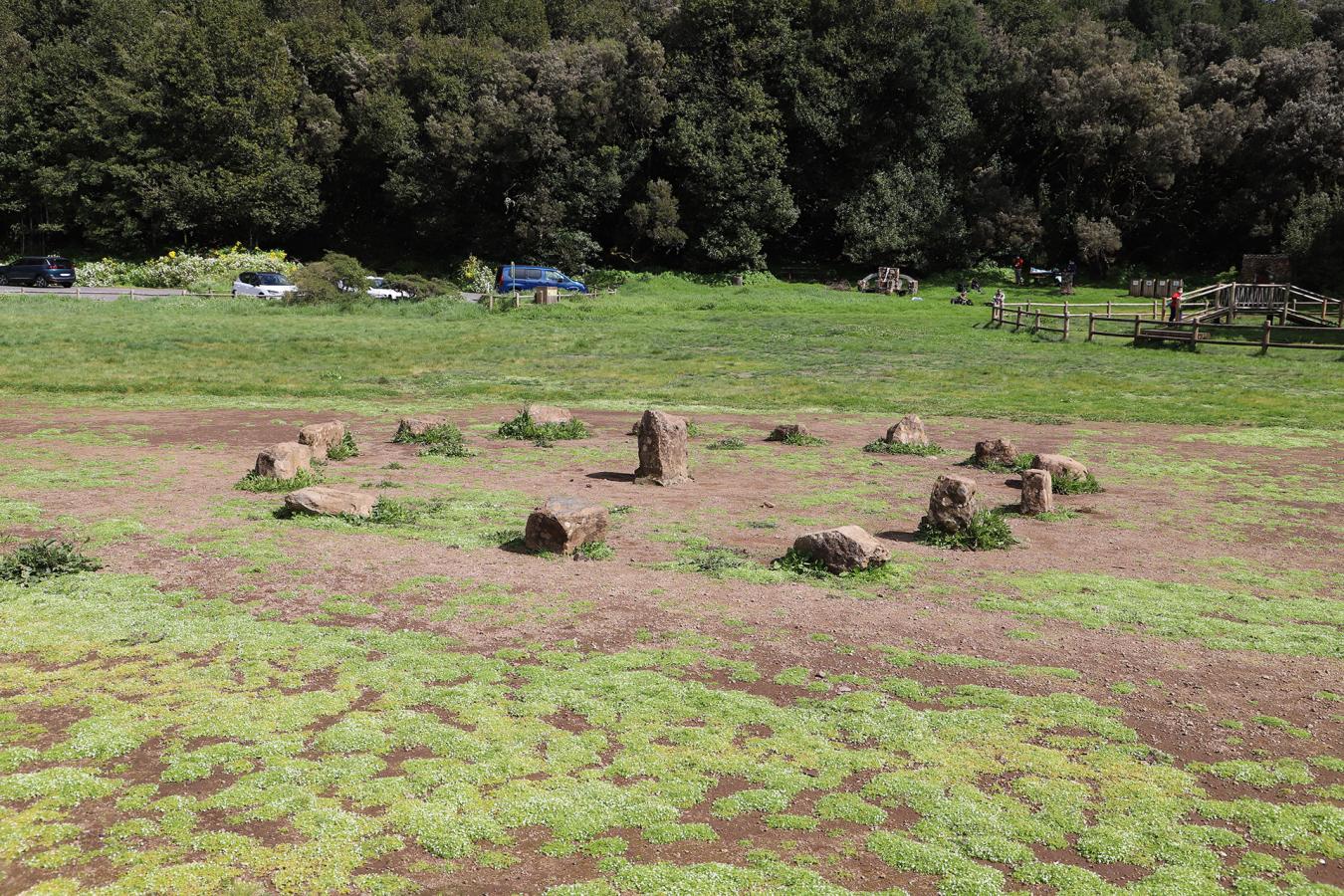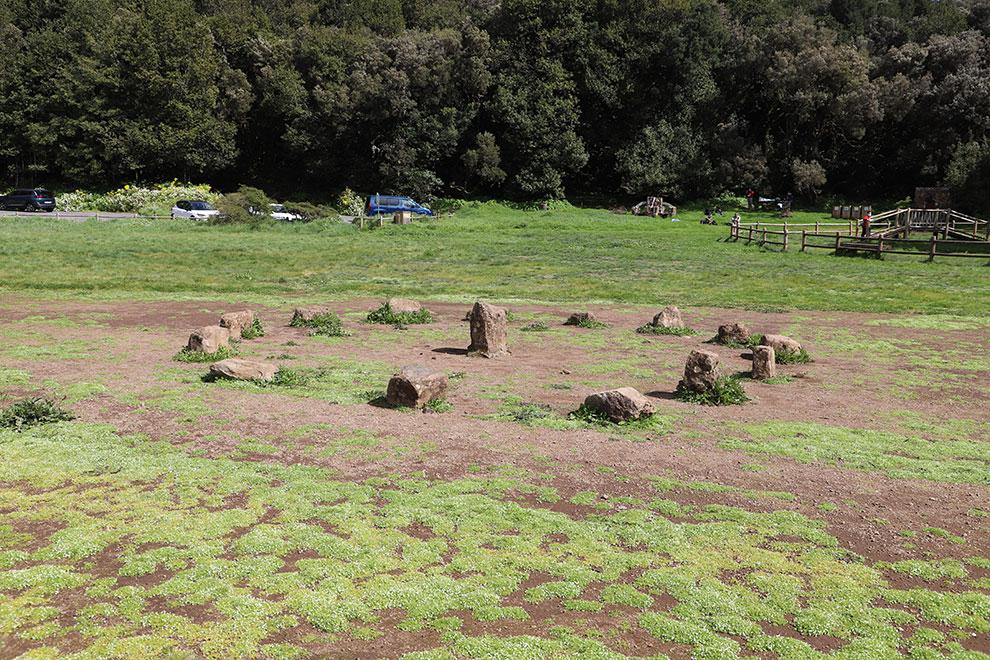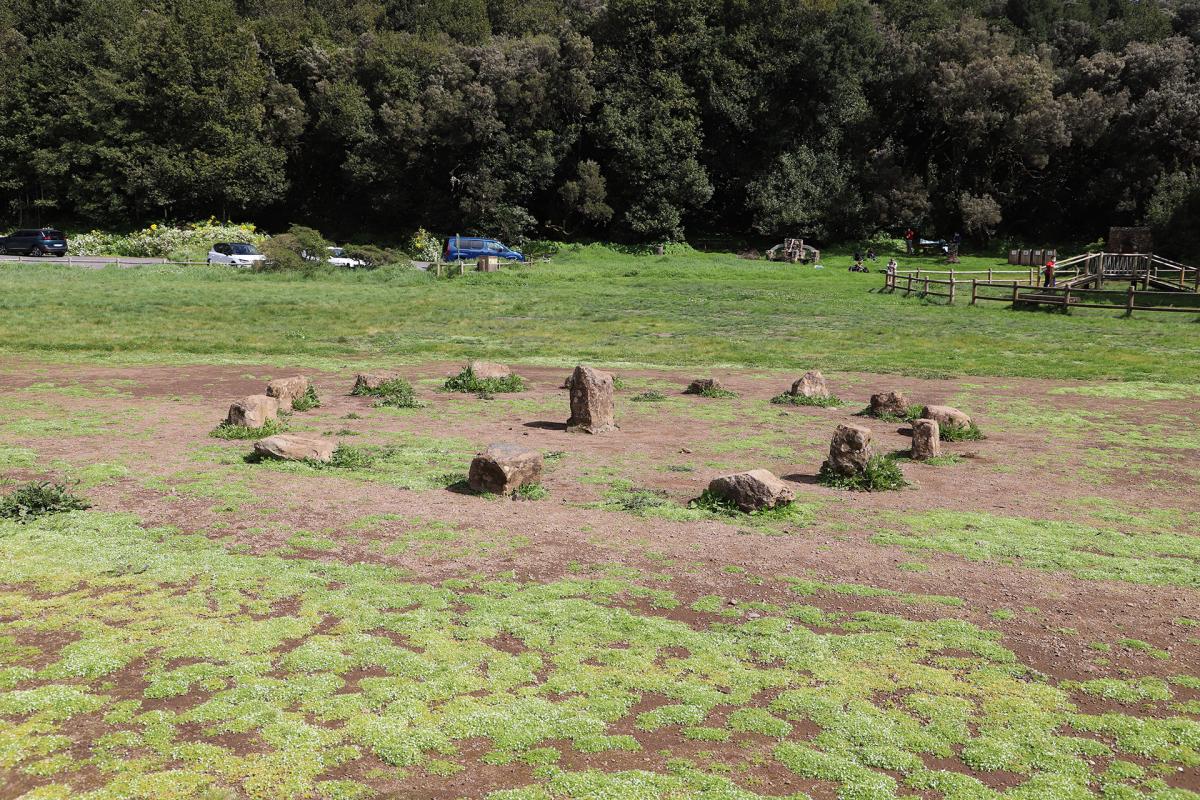With an antiquity of 12 million years, La Gomera is covered with abundant vegetation, ravines and lush virgin laurel forests, breathtaking valleys, good weather all year round and charming villages with a magic hard to find anywhere else in the world. In its 370 square kilometers, the island reaches altitudes like the 1,487 meters of the Alto de Garajonay, one magical place of the many that mark the summits of this island. Its vertical ravines are a paradise for hiking, with which, in addition, you can contemplate the sites and necropolis where you can still breathe the peace of the ancient inhabitants who considered their landscapes sacred. In fact, it was in these high places that they located their fortresses to practice their beliefs and rites, materialized in the sacrificial arenas that remain intact on this island declared a Biosphere Reserve by UNESCO. Crossed by more than 600 kilometers of marked trails through its virgin nature, we recommend that you reach these heights to contemplate beauty in its pure state where, why not, the divinities could listen to us more attentively:
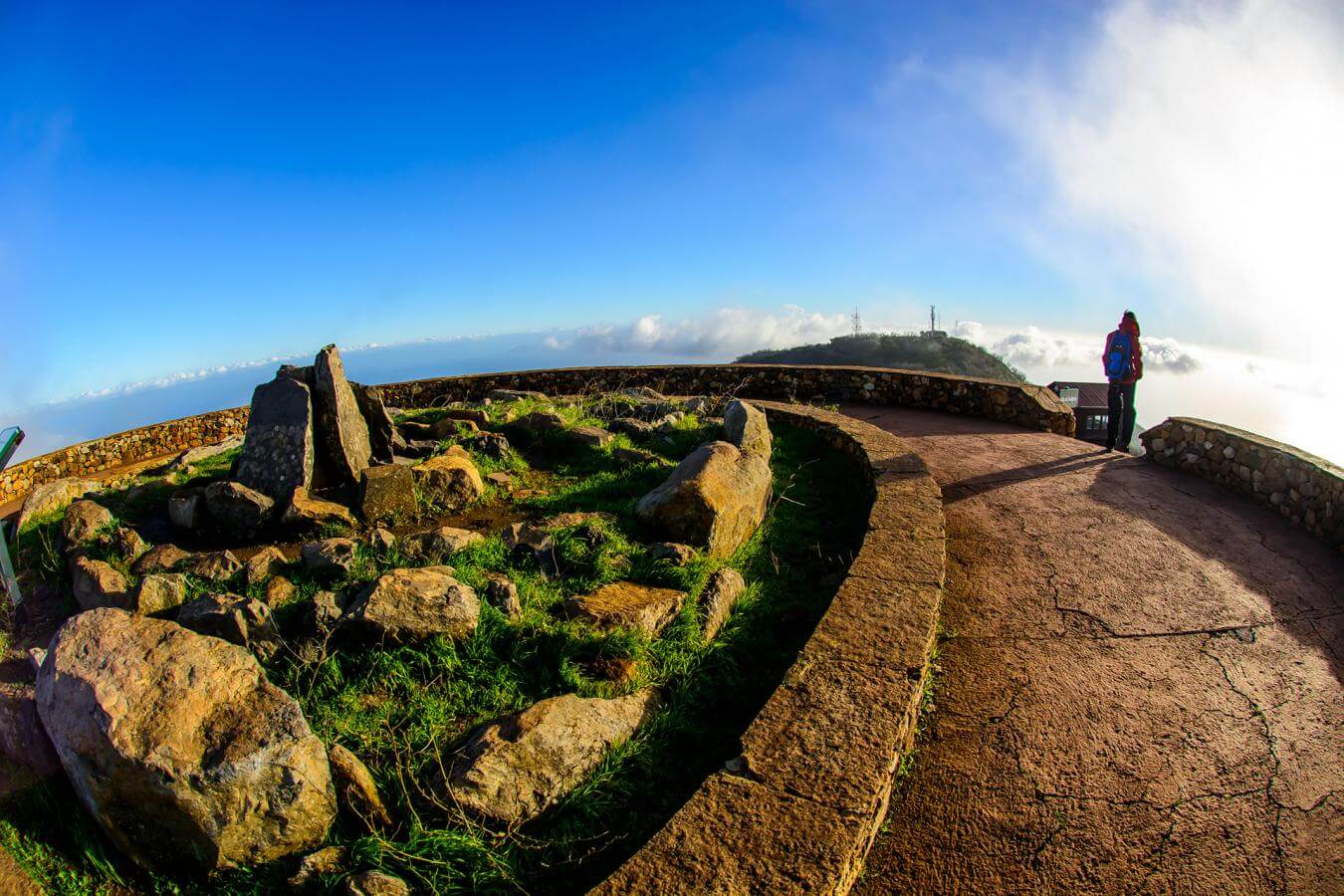
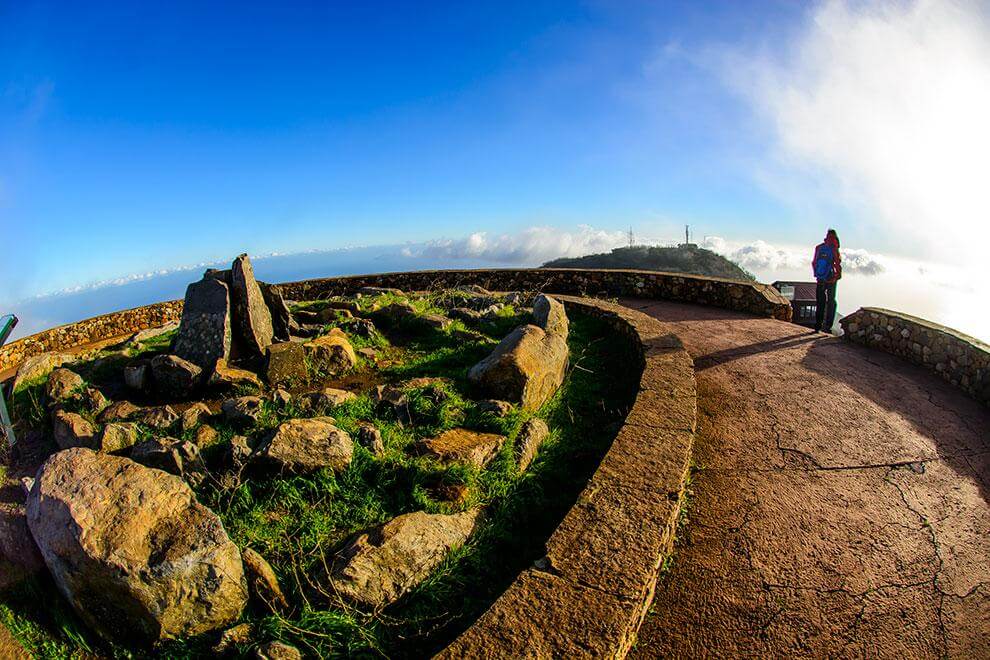
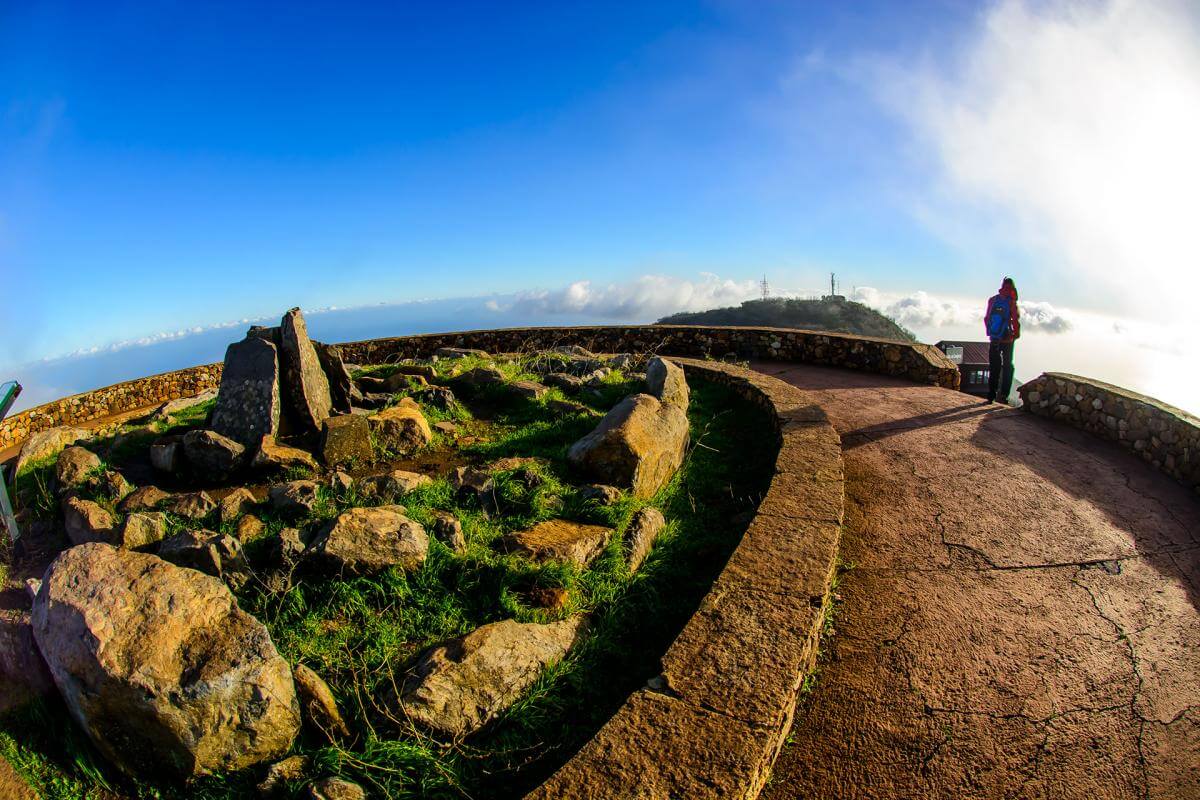
Chipude Fortress
Located in Vallehermoso, the fortress is known as the symbol of the resistance of the Gomeran aborigines and is one of the most cited archaeological sites as a place of Gomeran aboriginal worship. It has the appearance of a castle and was known to the original settlers as Argodey. It is a volcanic massif in the shape of an altar that can be seen from almost any high point on the island. Four groups of dry stone constructions can be identified at the top of the Fortress. A ritual function is recognized in these structures, having been sacrificial arenas for the domestic animals belonging to the livestock of the ancient Gomeros. These were offerings in which fire played a primordial role. The Fortress is a Protected Natural Heritage Site (Monumento Natural de la Fortaleza), and can be reached by a trail that starts in the town of Chipude and for which there is detailed information on the map of trails of La Gomera, distributed free of charge at tourist offices. The ascent is very steep, gaining 150 meters of elevation in just a few minutes; on the way down, we will be grateful to regain strength with watercress potage from La Gomera.
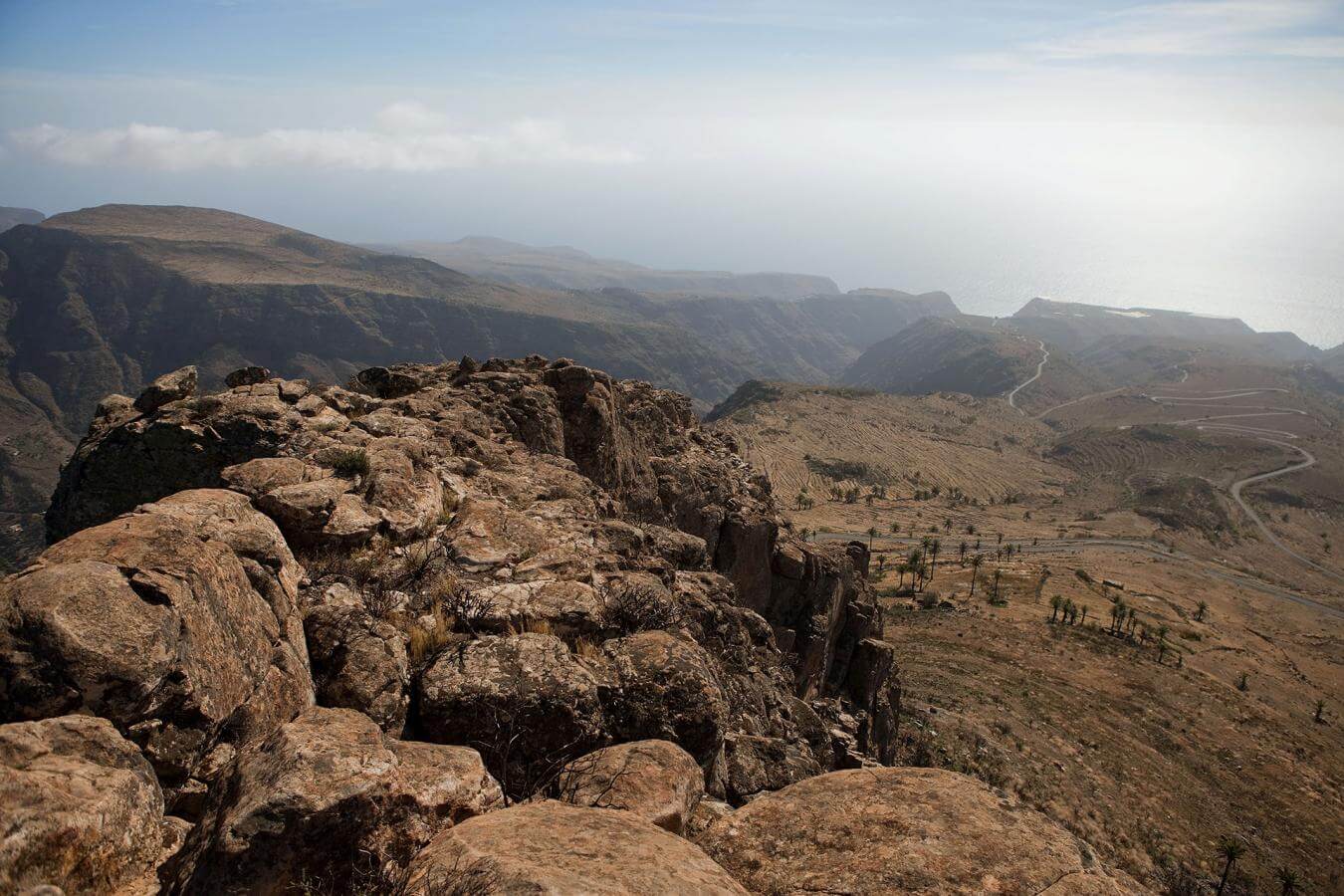
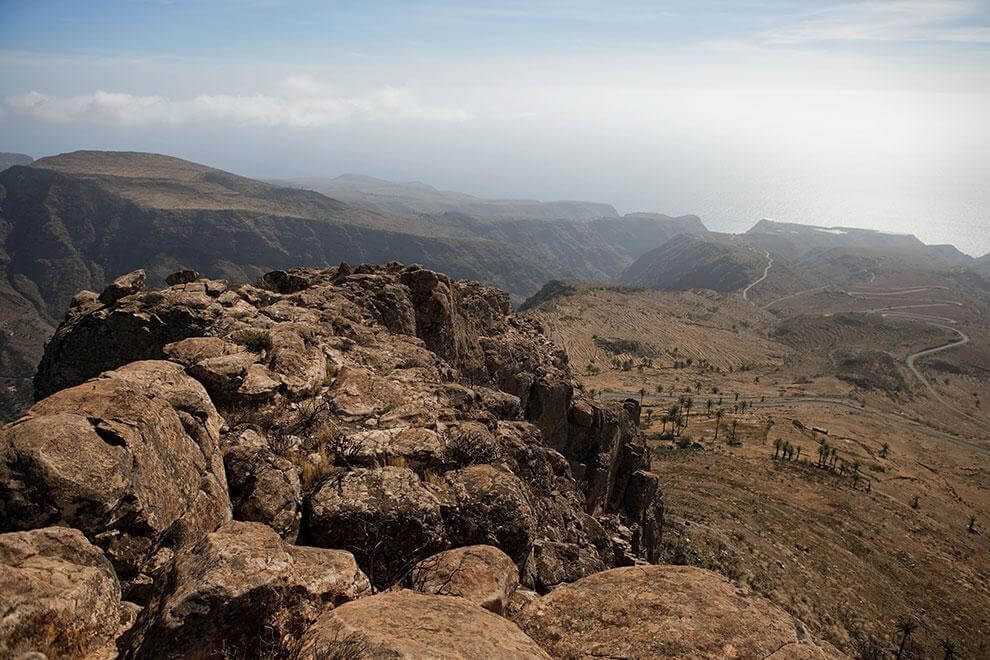
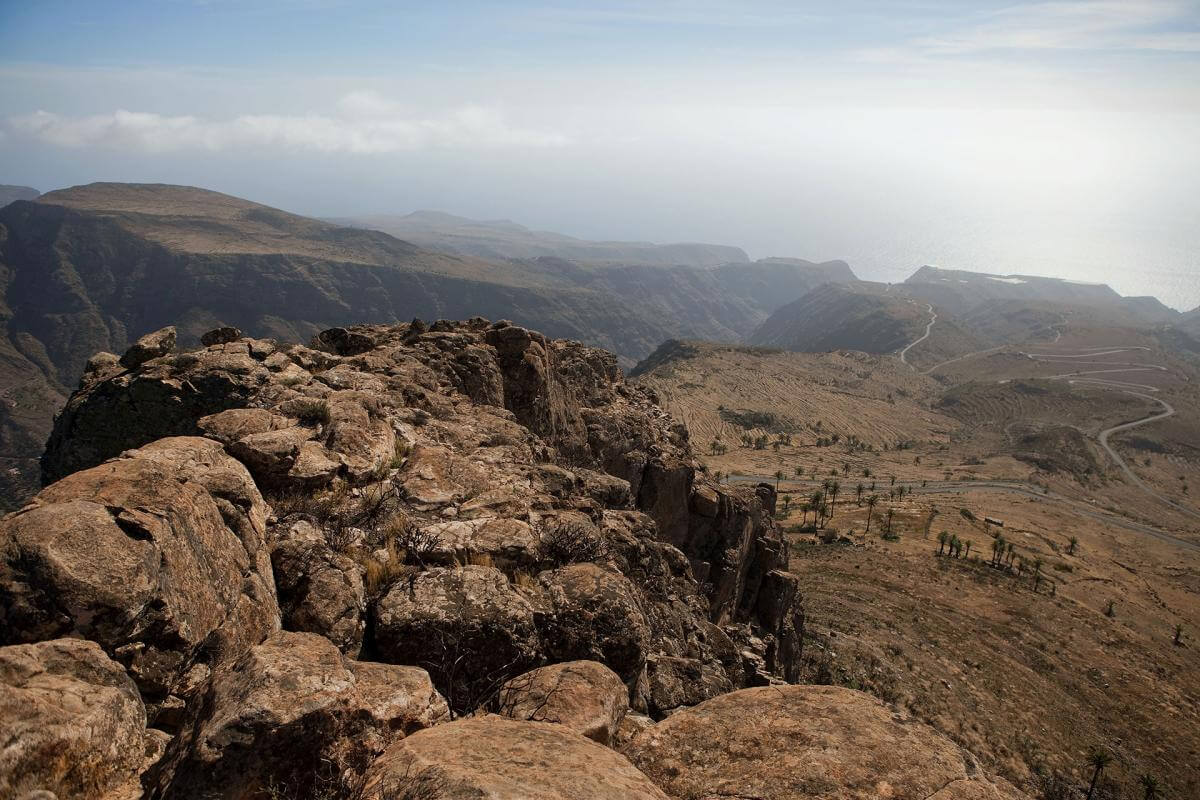
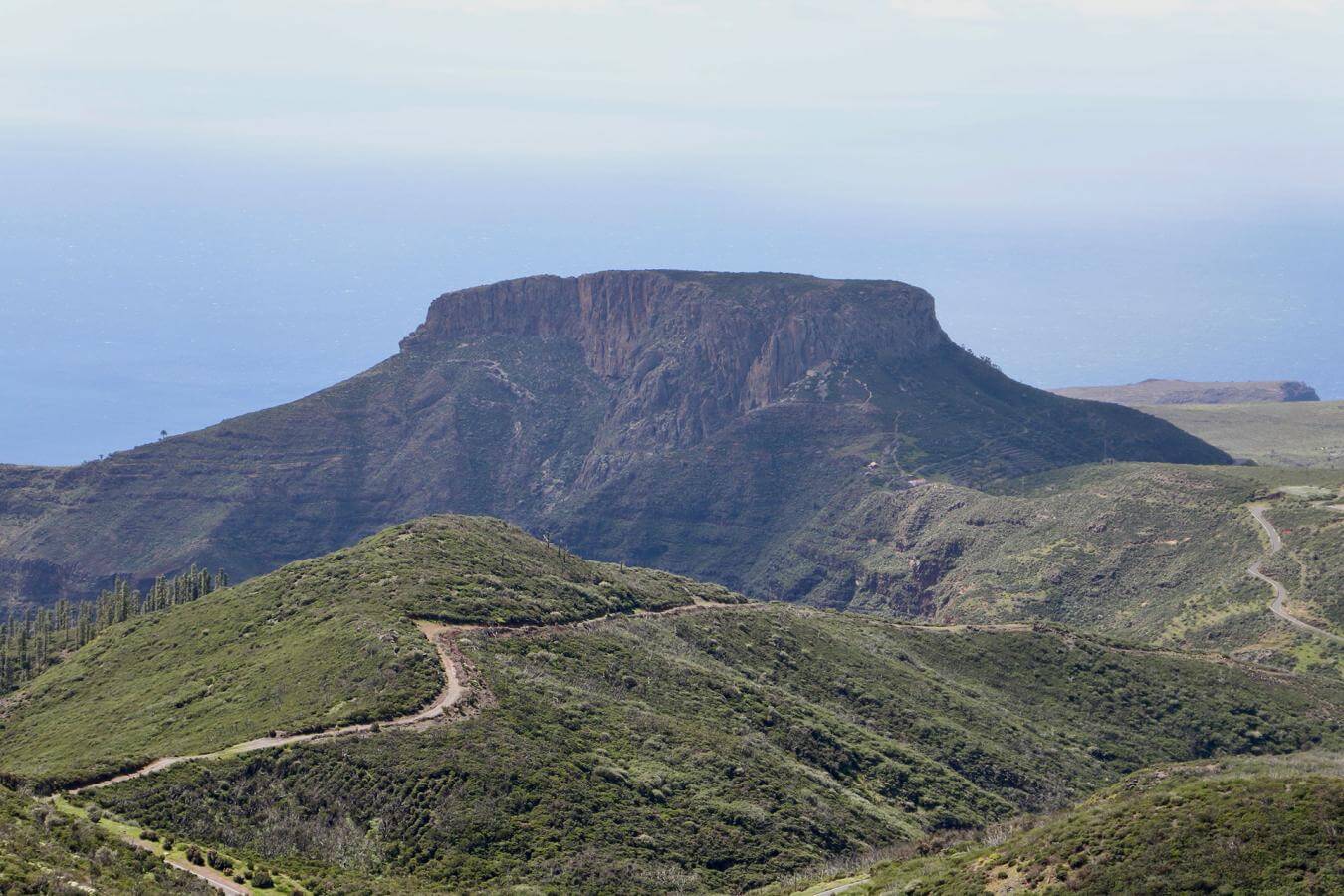
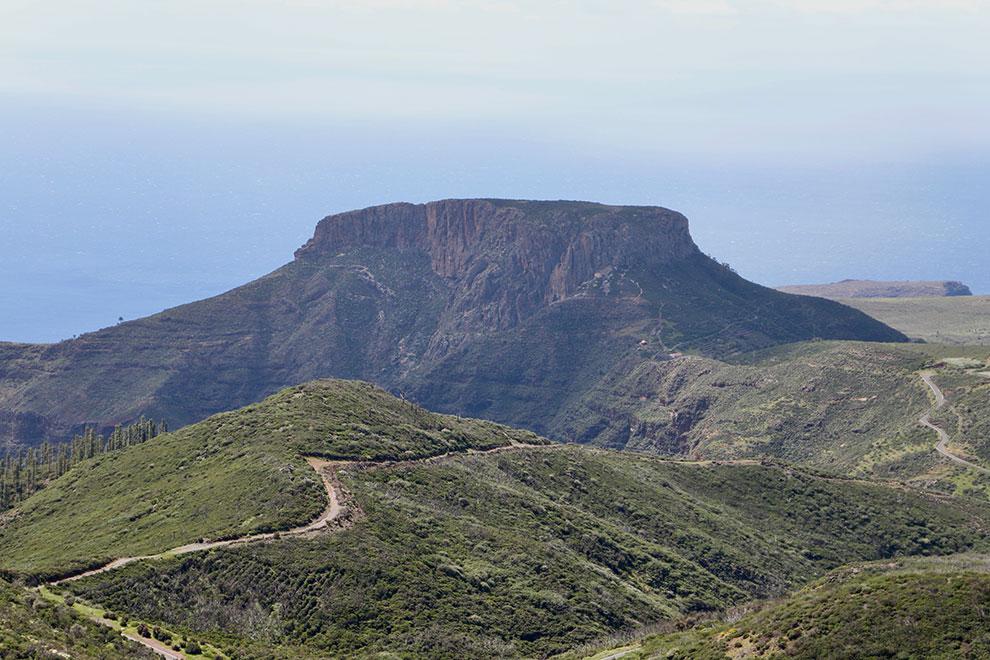
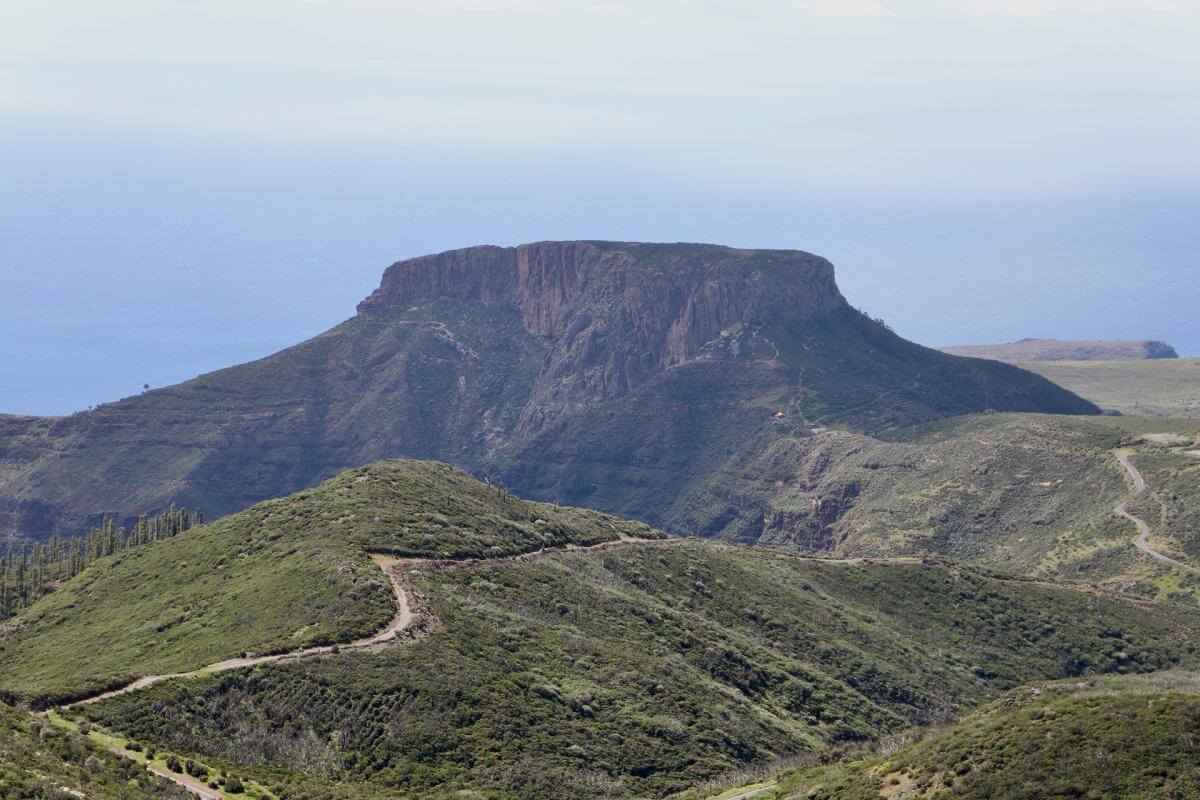
El Calvario in Alajeró
The location of the sacrificial arenas, whether in mountains, hills, ridges or any other, share a series of common qualities that must have acted as requirements in the choice of sites made by the aborigines of La Gomera. Elevation, verticality, visual dominance and intervisibility were sought. Although experts note that with the wind in its favor, the whistled language of La Gomera can be heard 10 kilometers away, given the echo of its impressive ravines, it is most likely that on a normal day it reaches 5 or 6 kilometers, a sufficient distance to establish the communication system that has earned itself recognition by UNESCO as an Intangible Cultural Heritage of Humanity.
Another of these sacred places that should not be missed is Calvario Mountain, which has a special meaning for its inhabitants, who also call it Tagaragunche. Graves with the remains of ancient inhabitants of the island were found in its caves. Very close to the archaeological sites is the hermitage of San Isidro Labrador, located in the unique enclave of the Tagaragunche Mountain. The circular trail of the El Calvario Mountain departs from this place.
It is not surprising that it is a sacred place since the view from the plateau is spectacular. To the south you can see the long coastline and the Atlantic Ocean and to the north, in the interior of the island, the town of Alajeró. And if there is good visibility, you can see the highest peak of La Gomera: El Alto de Garajonay.
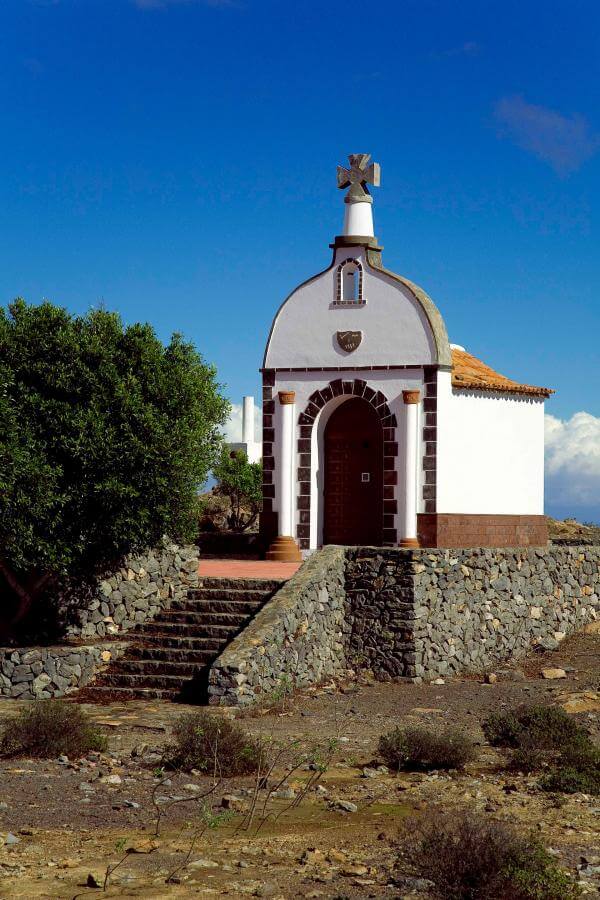

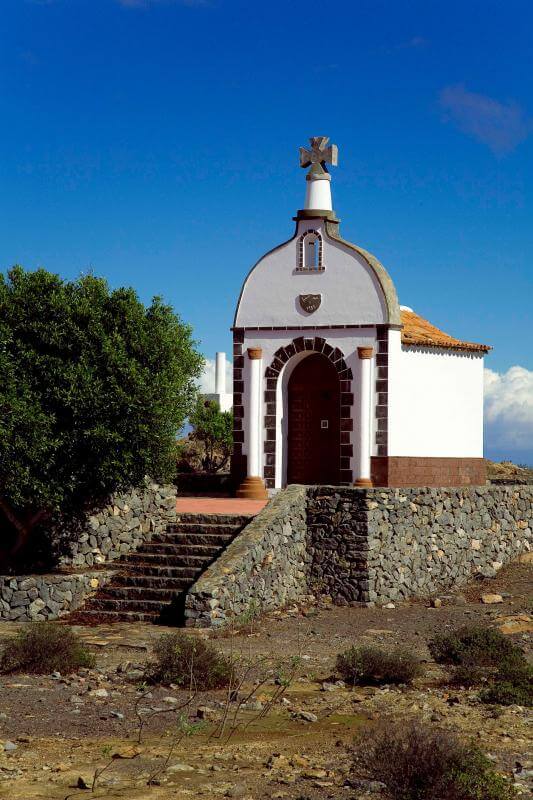
Ajojar-Teguerguenche Alignment
The Chipude Fortress has its parallels in the enclaves of the site of the Alojar/Adivino and Teguerguenche Mountain complex. These enclaves are considered landscape landmarks with a very high number of arenas, showing special visual and visibility conditions with respect to a large part of the island. They preside over areas of clear symbolic content in their immediate space, with large necropolises and cave paintings, and are at the head of large community territories in which other groups of lower-ranking arenas are concentrated. The route is of extraordinary beauty and runs through a trail of more than 16 kilometers if you start from Valle Gran Rey. It is advisable to start early and carry plenty of water.
Garajonay
At the summit of the Garajonay National Park, recognized by UNESCO as a Cultural and Natural Heritage of Humanity, the Alto de Garajonay, at 1,487 meters, is presented as a great sanctuary, far from any human settlement and probably endowed with an insular rank with numerous sacrificial altars. It is not surprising that this was the place chosen by the lovers of the legend of Gara and Jonay to ask the favor of their divinities when they were being persecuted and, unable to flee, performed the ritual suicide that made them immortal.
Garajonay National Park has been the most precious jewel for the people of Gomera since time immemorial and, for nature lovers, the best possible experience, entering its interior to discover landscapes impossible to imagine such as the forest of El Cedro or the trails that start from the Great Lagoon.
